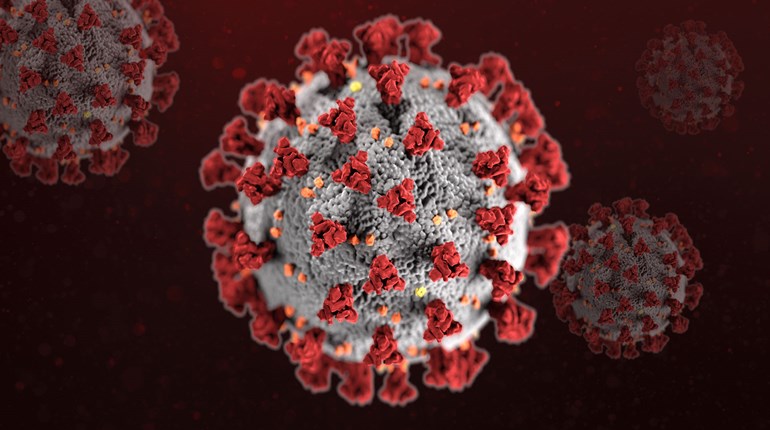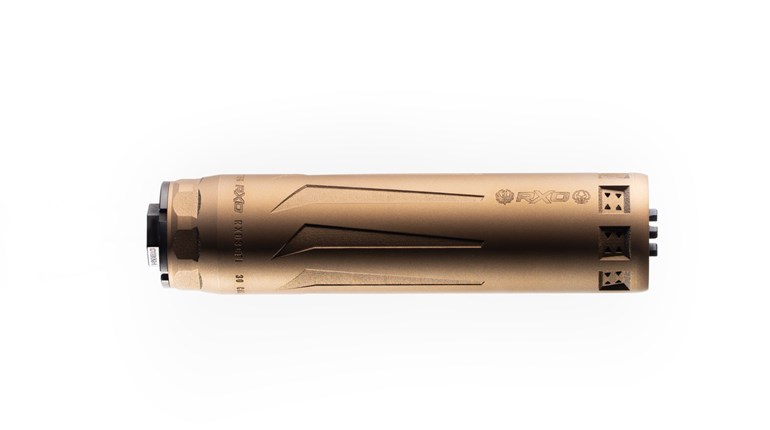
Don’t over-think this. Bucks have very basic motives this time of year. As long as you line up with those motivations and don’t let the bucks know you are hunting them, eventually you will be successful.
Here are a dozen tips to help you simplify the rut this season.
1. Hunt Scrape Lines Early Then Forget ’Em
You can catch bucks on scrapes during the last two weeks of October and the first few days of November.
Start by picking the right scrapes to hunt over. You want scrape lines, not individual scrapes. Scrape lines are located along a buck’s travel route. They are not found on the edge of an open field.
You are not hunting the scrapes as much as you are hunting the travel routes the bucks used when they made them. The scrapes just tell you which routes to focus on.
Though bucks are not on strict feeding patterns during this time, they are still roaming within their home ranges and still using feeding areas regularly—they grab a few bites, check on a few does then keep moving. So the simplest scrape lines to find are those leading toward feeding areas. You can just work backwards a hundred yards from the bedding area and set up.
When you start to see bucks aggressively chasing does, it’s time to stop hunting scrapes and start hunting does.
2. Hunt Does to Find the Big Bucks
Once bucks start aggressively chasing does, shift all your focus to finding the best doe patterns. In most parts of North America, this occurs during the first week of November. The bucks will stop using their normal travel patterns and begin to look for does.
From this point forward, buck sign becomes much less useful. The sign only marks where a buck has been, not where he will be. If you want to know where he will be, just consider what he is looking for: does! Find the does and you will find the bucks. Spend your time where the does concentrate and in stands overlooking any funnels between two such places.
3. Bottlenecks Simplify the Rut
If you have limited time to scout, focus all your efforts on bottlenecks. They are easy to find. When bucks are traveling, they like to use the path of least resistance as long as it keeps them hidden. Anytime you can find a seam in the terrain, or a strip of cover that offers both concealment and easy passage, you have a potential hotspot.
You don’t need to know much about the deer in the area, you just need an eye for spotting bottlenecks, and you can be successful during the rut.
Terrain-related funnels include saddles, steep bluffs, ditch crossings and river crossings, to name just a few. Cover-related funnels can include brushy fence lines, narrow fingers of cover and the inside corners of open fields that extend into thick timber. Any narrow strip of cover can be a bottleneck if it lies between where a buck is and where he wants to be (the next area where does concentrate).
4. Hunt From the Outside In
When hunting a new area it is best to stay conservative. Choose a vantage point such as a brushy fence line, a long finger of cover or a creek crossing for your stand. These are simple spots to find and they are easy to get to and from without bumping into deer. You can learn as you hunt without the risk of burning out your hunting area.
It takes discipline not to rush right in and start looking for the hottest buck sign, but working from the outside in—keeping the pressure off until you know just how to proceed—is a far better approach.
After only a few days, you will learn enough about the deer in the immediate area to know what to do next—and you may have your tag filled by then. Some of these fringe-stand sites are great rut ambushes.
5. Best Time to Call
I have called in at least half the bucks I have shot over the years, yet I never call blindly. I only call to bucks I have seen and want to shoot. This keeps me from educating deer by over-calling.
When a buck is passing out of range, a few simple grunts can make a huge difference. You can watch the buck and raise the volume until he has heard the call and then you can hit him with one more grunt to home in on before you go silent. Occasionally, it takes more coaxing, but if he doesn’t come at this point, it is unlikely he will.
I used to think the snort-wheeze call was a novelty until I started using it. You can perform the snort-wheeze with just your mouth. A Web search will find plenty of examples.
When a buck ignores the grunt, or just doesn’t hear it, the higher-pitched snort-wheeze may turn him. Again, like the grunt, the snort-wheeze works a lot better when you can actually see the deer and react to its body language.
I don’t pretend to be the world’s expert on calling deer. I don’t even carry antlers. But I have had tremendous success grunting them in over the years. I just keep it very simple and don’t over-call.
6. The Ultimate Morning Stand
As mentioned in Tip No. 2, as soon as I see bucks chasing does I start hunting does instead of buck sign. Once this transition occurs, I hunt doe bedding areas almost exclusively in the mornings. The bucks will come in shortly after daybreak looking for the does.
Unfortunately, if you don’t already know where to find a few doe bedding areas from past experience and winter scouting, you are going to have to guess at their location. Don’t walk all over trying to find them.
Does like to bed on elevated sites such as ridges and points. If high ground is not available, you can usually find them bedding on the downwind edge of heavy cover.
You have to be able to consistently fool the local does or they’ll move off and take your bucks with them. Don’t over-hunt any doe bedding area. When the does start to show signs of avoiding your stand, it’s time to move on.
You can further keep your impact low by hunting bottlenecks between two doe bedding areas. There likely won’t be deer nearby when you sneak in and out of these stands, so it is much easier to hunt these travel routes undetected—keeping the local deer from realizing you are hunting them for as long as possible. That is key to seeing daylight movement.
7. Hunt Feeding Areas in the Evening
In the evenings, the does concentrate at feeding areas. This pattern typically continues through the first week of November. Shortly after that, however, the does stop coming out in the open to avoid constant harassment from every buck in the area.
My best rut stands are evening stands found right on the edge of little food plots. Many of these I actually constructed myself with limited power equipment on a small budget. My friends and I call them “poor man’s plots” because you can make them with little more than inspiration and perspiration.
These small, secluded spots are killer stand locations because they lie close to bedding areas and security. Deer can step in, look around, grab a bite to eat and be back in the cover without feeling exposed to danger. If you can make a couple of these (even as small as a quarter-acre) in your hunting area, you will have a lifetime of killer afternoon stand locations.
8. Entry and Exit is Critical
Even During the Rut
You may think that with the rut going strong you can afford to bump a few deer and not hurt your chances. It is all turmoil in the deer woods anyway, right? It may seem that way, but it is not true. No matter what strategy you use or what rut phase you hunt, you’ll never tag a buck that knows he’s being hunted. And even if the bucks don’t pick you off, the does surely will and that spells doom almost as quickly.
For example, if you are careless in your approach to your stand and you flush the does from a bedding area, they will be cautious in that area for days to come. They may even avoid it. Since bucks take their cue from the body language of does at this time of the year, you can’t afford to alert any deer and still expect to see lots of daylight activity.
Even if you bump a deer that slinks out of the area without you even realizing it, you have taken a big step toward “burning out” that stand site. So, you have to go to extremes to avoid all deer when selecting your entry and exit routes.
9. Be Aggressive When You Find a Breeding Pair
Keep a lookout for a buck that is obviously tending a doe (following her around everywhere she goes). He will be more or less keeping guard over her. When they stop or bed down, you have a unique opportunity for a stalk. If you are hunting with a gun, this should be duck soup, but even with a bow, you have a reasonable chance to pull this off. I see this every two or three seasons, and if you hunt open ground, you can expect to see it even more often.
The breeding pair will be distracted and you can often slip up close to them and wait for them to stand. Sometimes another buck will come near and the one you are waiting for will get up to run him off, giving you a shot.
10. Mornings are Better
If you are serious about shooting a nice buck this season, you should hunt all day during the week from Nov. 5-12. But when forced to choose between mornings and evenings I’d pick the mornings every time. That’s my conclusion after 25 years of hunting every day of the rut. Bucks seem to log more daylight hours in the morning than they do in the afternoon.
Generally, if you are hunting the right places, you can count on about two hours of movement in the evenings and about four hours of movement in the mornings. Additionally, the bucks seem a little less alert in the mornings, maybe just a bit more prone to make mistakes.
11. A Ditch Funnel is the Easiest Rut Stand
Ditch funnels are the easiest of all rut stands to find and one of the very best to hunt. Anytime you find a draw between two adjacent ridgeline points you have the makings for an erosion ditch at the bottom. In typical rolling, hilly deer country these ditches are common. At the risk of oversimplifying the setup, find a heavy crossing near the upper end of the ditch (where it starts) and place your stand. Climb in, shoot a buck. Well, maybe it is not that simple.
In some cases, if the ditch is particularly deep or steep the best crossing may be the upper end of the ditch where deer go around it. These ditches often lie between two bedding ridges used by does. Bucks cruising between them will come through the ditch crossings regularly. They are simple to find and simple to hunt.
12. Don’t Rely Too Heavily on Trail Cameras
During the rut, you can make a mistake by relying too heavily on what you see on your trail cameras. Bucks move around more during the rut than at any other time of the season, and even though their core area may still be the center of their movement patterns, they may spend a day or two away from this core area from time to time. A buck can show up and disappear quickly, and if you are basing your stand selection on trail camera photos, you may always be one step behind them.
The only exception occurs when you can check your cameras every single day. Then you are able to react to real-time information, rather than days-old data. During the rut, that is the only way you can keep up. Otherwise, you are better off logging quality hours on sensible stands and waiting for the blender that is the rut to shoot a buck your way.






































